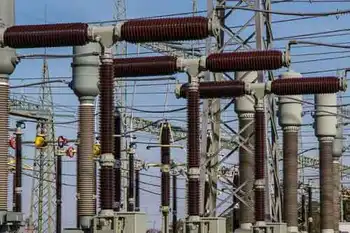Device Uses Sewage Bacteria to Produce Electricity
By National Geographic News
NFPA 70e Training
Our customized live online or in‑person group training can be delivered to your staff at your location.

- Live Online
- 6 hours Instructor-led
- Group Training Available
"Everybody has to eat," said Penn State environmental engineering professor Bruce Logan. "And you know the implications of eating." Logan is talking about human waste, of course.
Household wastewater from bathrooms and kitchens contains both organic materials and bacteria. Logan and his colleagues have designed a new "reactor" that not only treats the waterwater, but uses bacteria and sewage raw materials to produce power.
The double benefit might someday reap enormous financial savings while providing a clean energy source and improved wastewater treatment, particularly in the developing world.
However, much work remains. To date, the team has only produced enough electricity to meet five percent of the power drawn by a single Christmas tree light bulb.
Bacteria Power
Wastewater bacteria feed on everything from solid human waste matter to last night's leftovers. As the bacteria eat, they convert organic matter to carbon dioxide, releasing electrons, the basic element of electrical current.
Logan and his team have discovered how to tap into this unorthodox energy source using a fairly simple contraption.
Their reactor is comprised of a plastic tube measuring just 6 inches (15 centimeters) long and 2.5 inches (6.5 centimeters) in diameter through which wastewater is circulated. Graphite rods inside the tube function as negative electrodes and host bacteria that stick to the rods' surfaces. As the bacteria feed, electrons are released and move as electrical current through the graphite rods into wires outside the liquid container to a cathode, or positive electrode, constructed of plastic, carbon and platinum.
"When we eat, we oxidize material and we get rid of electrons using oxygen through the lungs and blood," Logan said. "Bacteria have to put the electrons somewhere, or they can't continue to eat. So those electrons can be transferred to the electrode and through the complete electric circuit we've created."
The result keeps the bacteria hungry and the juice flowing.
Logan and Penn State colleagues Hong Liu and Ramanathan Ramnarayanan recently published their findings in the online edition of the science journal Environmental Science & Technology.
Savings Windfall?
Microbial fuel cells, which harness the power of bacteria, are not a new phenomenon. Researchers have studied them for years and have used a variety of liquid solutions, including glucose, acetate, and lactate, to produce electricity. Scientists have also sought to tap the power of baking yeasts and even ocean sediment microbes.
But Logan's group aims to generate power directly from an undesirable and ubiquitous material—untreated wastewater. It's a matter of practical application.
"We needed to find a way to allow a reactor to operate using water with lots of particles, not pure lab solutions," Logan said. "As a first feasibility study, our reactor has proven that it can handle this kind of material."
While early results show promise, consumers shouldn't plan to end their electric utility service or fill their septic systems in anytime soon. The Penn State researchers say that while they've slowly increased their reactor's power output, it still falls far short of an average home's electric needs.
"Right now the power density is too low. We need more efficiency, meaning more electrons on electrodes in less area," Logan said.
The researchers say a second hurdle is cost. The average home would not be able to afford such a reactor even if they were available—at least for now.
"It's not cheap. It's currently not an economically feasible process," Logan said. "But it's like anything else in the early stages until you figure out how to make it cost effective. Computers that do less than a pocket calculator used to cost a million dollars."
Yet the potential is promising enough that the group can think big. "Our goal is to replace your local [wastewater] treatment plant with a power plant where you accomplish treatment but also generate electricity," Logan said.
The cost of treating 33 billion gallons (126 billion liters) of wastewater in the U.S. alone costs some 25 billion dollars (U.S.) a year. Significant funds are spent to power the process.
"We spend a lot of our national electricity expenditure on waste treatment. We could greatly reduce that number while generating additional electricity," Logan said.
One of the largest expenses incurred while treating wastewater is the process of adding oxygen to the wastewater, called "activated sludge." The aeration is necessary to promote biological action that breaks down waste. The Penn State microbial reactor could greatly reduce this expense because a key component, by design, receives oxygen directly from air.
It's unclear if the Penn State microbial reactor could be used to treat sewage in its entirety. But the system has proved comparable to other anaerobic treatment methods by removing about 80 percent of wastewater's chemical oxygen demand.
Logan believes the wastewater treatment benefits of his device could someday be significant.











